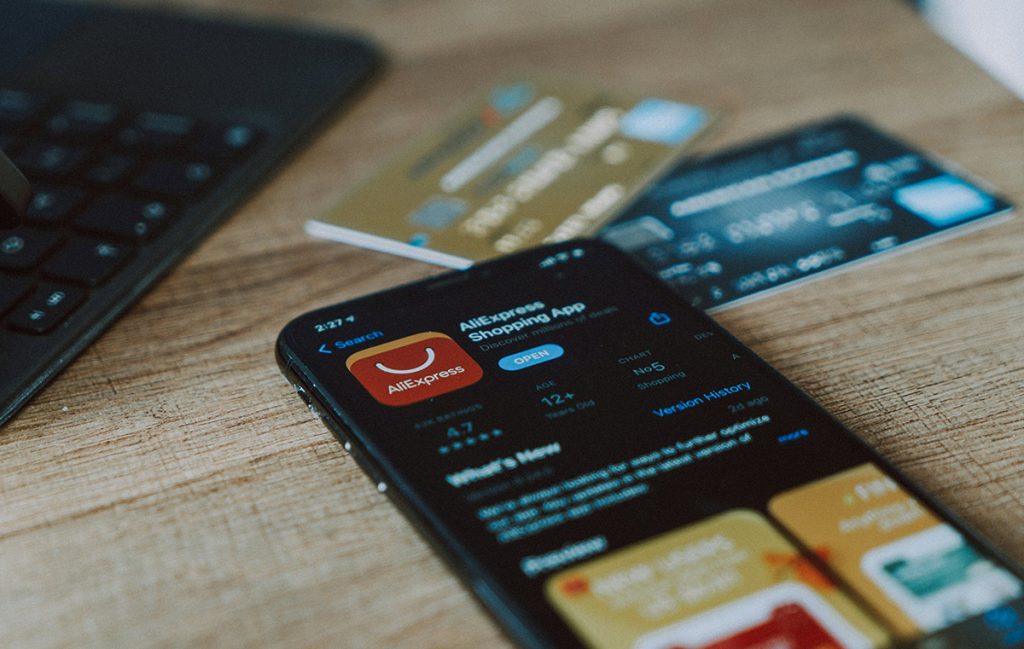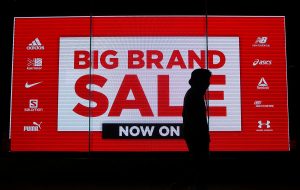Implementing a Successful Customer Loyalty Program

Implementing a successful customer loyalty program is a strategic move that can significantly impact your business’s growth and profitability. With today’s competitive market, retaining customers is just as important as acquiring new ones.
A well-executed loyalty program can not only increase customer retention but also boost customer lifetime value, leading to enhanced brand loyalty and advocacy. In this blog post, we will delve into the key strategies and best practices for creating and implementing a customer loyalty program that drives results.
By the end of this post, you will have a clear understanding of how to design a loyalty program that resonates with your target audience, fosters repeat purchases, and ultimately strengthens your brand-consumer relationship. Let’s explore the essential steps to building a successful customer loyalty program that sets your business apart in today’s competitive landscape.
Understanding Customer Loyalty Programs
Customer loyalty programs are vital strategies employed by businesses to retain customers and cultivate long-term relationships. By offering incentives and rewards, companies can encourage repeat purchases and foster brand loyalty. These programs are designed to show appreciation to customers for their continued support and to incentivize them to choose a particular brand over competitors.
Definition and Importance of Customer Loyalty Programs
A customer loyalty program is a structured marketing strategy that rewards customers for their repeat business or engagement with a brand. These programs aim to increase customer retention by providing added value and personalized experiences. By collecting data on customer behaviors and preferences, businesses can tailor rewards to individual customers, enhancing their overall experience and strengthening brand-customer relationships.
The importance of customer loyalty programs lies in their ability to drive customer engagement and increase customer lifetime value. When customers feel appreciated and rewarded for their loyalty, they are more likely to continue doing business with a company. Additionally, loyal customers are more likely to recommend a brand to others, leading to positive word-of-mouth marketing and organic growth.
Benefits of Implementing a Customer Loyalty Program
- Increased Customer Retention: Customer loyalty programs foster repeat purchases and increase customer retention rates. By offering rewards and incentives, businesses can incentivize customers to continue choosing their brand over competitors.
- Enhanced Customer Relationships: Through personalized rewards and experiences, businesses can cultivate stronger relationships with their customers. By showing appreciation and understanding their preferences, companies can create loyal brand advocates.
- Improved Customer Lifetime Value: Loyal customers tend to spend more over time, increasing their lifetime value to a business. Customer loyalty programs can help boost average order value and frequency of purchases, ultimately driving revenue growth.
- Word-of-Mouth Marketing: Satisfied and loyal customers are more likely to recommend a brand to others. By creating a positive customer experience through loyalty programs, businesses can benefit from valuable word-of-mouth marketing and referrals.
In conclusion, understanding the significance and benefits of customer loyalty programs is crucial for businesses looking to build lasting relationships with their customers and drive sustainable growth. By implementing effective loyalty programs, companies can differentiate themselves in competitive markets and create a loyal customer base that forms the foundation of their success.
Key Components for a Successful Customer Loyalty Program
Implementing a successful customer loyalty program requires careful consideration of key components that contribute to its effectiveness. By understanding the following sub-sections, you can develop a robust loyalty program that resonates with your customers and keeps them coming back for more.
Identifying Target Customers and Their Needs
Before launching a loyalty program, it’s essential to identify your target customers and understand their needs and preferences. Conduct market research to gather insights into what motivates your customers to remain loyal to your brand. By segmenting your customer base and tailoring your loyalty program to meet their specific needs, you can create a more personalized and engaging experience that drives customer retention.
Designing Rewards and Incentives
The success of a customer loyalty program heavily relies on the rewards and incentives offered to participants. Design rewards that are appealing, attainable, and aligned with your customers’ interests. Whether it’s exclusive discounts, personalized offers, or VIP perks, ensure that your rewards incentivize repeat purchases and foster a sense of appreciation among your loyal customers.
Personalization and Customization Strategies
Personalization is key to building meaningful relationships with your customers. Implement personalized communication strategies that address customers by their names, recommend products based on their past purchases, and acknowledge their loyalty milestones. By customizing the customer experience, you can create a sense of exclusivity and connection that strengthens loyalty over time.
Effective Communication Channels
Communication is essential for maintaining customer engagement and fostering loyalty. Utilize a mix of communication channels, such as email, SMS, social media, and in-app notifications, to keep your customers informed about their rewards, upcoming promotions, and exclusive offers. By staying in touch with your customers at the right moments, you can enhance their overall loyalty program experience.
Data Analysis and Feedback Integration
To continuously improve your customer loyalty program, it’s crucial to analyze performance data and integrate customer feedback into your strategy. Monitor key metrics, such as customer retention rate, redemption frequency, and engagement levels, to identify areas for optimization. Encourage customers to provide feedback through surveys or reviews to gain valuable insights that can shape your program’s future enhancements. By leveraging data and feedback, you can fine-tune your loyalty program to meet evolving customer expectations and drive long-term loyalty.
Implementing and Managing the Loyalty Program
Implementing a successful customer loyalty program requires strategic planning and efficient management to ensure its effectiveness. Let’s delve into the key steps involved in implementing and managing a loyalty program to drive customer retention and engagement.
Choosing the Right Loyalty Program Model
When selecting a loyalty program model, it’s crucial to consider your target audience and business objectives. Whether it’s a points-based system, tiered rewards, or a subscription-based model, the chosen program should align with your customers’ preferences and purchasing behaviors. By understanding what motivates your customers, you can tailor the loyalty program to maximize participation and satisfaction.
Setting Clear Objectives and KPIs
To measure the success of your loyalty program, establish clear objectives and key performance indicators (KPIs) from the outset. Whether your goal is to increase customer retention, boost average order value, or drive repeat purchases, define metrics that are specific, measurable, and relevant to track the program’s impact. Regularly monitor and analyze these KPIs to make data-driven decisions and optimize the program for better results.
Selecting Suitable Technology Solutions
Investing in the right technology solutions is essential for the efficient management of a loyalty program. From customer relationship management (CRM) systems to loyalty program platforms, choose tools that enable seamless enrollment, personalized rewards, and targeted communication with your customers. Embracing technology can streamline program operations, enhance customer experience, and provide valuable insights for continuous improvement.
Training Staff and Ensuring Customer Support
Ensuring that your staff is well-trained on the loyalty program’s features, benefits, and redemption processes is key to its successful implementation. Empower your team to educate customers, address inquiries, and resolve issues promptly to enhance the overall customer experience. Additionally, offering reliable customer support channels, such as chatbots, FAQs, or dedicated helplines, can reinforce trust and loyalty among program participants.
Implementing and managing a customer loyalty program involves a strategic approach that considers the needs of both your business and your customers. By choosing the right program model, setting clear objectives, leveraging technology solutions, and prioritizing staff training and customer support, you can create a rewarding loyalty program that fosters lasting relationships and drives business growth.
Measuring Success and Continuous Improvement
When it comes to implementing a successful customer loyalty program, one vital aspect is measuring success and continuously improving the program. Tracking and evaluating key metrics, collecting and analyzing feedback, and being open to implementing changes and innovations are critical steps in ensuring the effectiveness and longevity of your customer loyalty initiative.
Tracking and Evaluating Key Metrics
To gauge the success of your customer loyalty program, tracking key metrics is essential. Metrics such as customer retention rates, repeat purchase frequency, customer lifetime value, and Net Promoter Score can provide valuable insights into the program’s performance. By regularly monitoring these metrics, you can identify trends, spot areas needing improvement, and make data-driven decisions to optimize your loyalty program.
Feedback Collection and Analysis
Collecting feedback directly from your customers is another crucial component of measuring the success of your loyalty program. Customer feedback can reveal valuable insights into their satisfaction levels, preferences, and pain points. Utilizing surveys, social media listening, reviews, and direct communication channels can help gather this feedback. Analyzing this feedback enables you to understand what is working well and what areas need enhancement, guiding your continuous improvement efforts.
Implementing Changes and Innovations
Acting on the insights gleaned from key metrics and customer feedback is vital for driving continuous improvement. Whether it’s refining rewards offerings, enhancing the user experience, or introducing new engagement strategies, being willing to adapt and innovate is key to the success of your loyalty program. By staying agile and responsive to customer needs, you can ensure that your program remains relevant and compelling, fostering long-term customer loyalty and satisfaction.
Takeaways
Implementing a successful customer loyalty program is crucial for fostering lasting relationships with your customers. By offering personalized rewards, engaging communication, and seamless experiences, you can keep your customers coming back for more. Remember to regularly analyze and adjust your loyalty program based on customer feedback and data insights to ensure its effectiveness. Stay proactive, stay customer-centric, and watch your business thrive with a loyal customer base.










